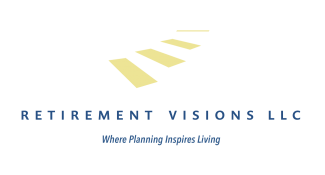
10 Retirement Planning Moves to Make 2019 Your Best Year
It’s time to settle into 2019 right, particularly as it pertains to retirement planning! These 10 tips can help everyone get this year off to a financially rewarding start.
1. Boost retirement contributions
Now that the New year is off and running, February is a great time to boost your retirement contributions. The good news is that now in 2019, you can contribute more than ever before! The maximum annual 401(k) contribution limit is increasing by $500 to $19,000, or $25,000 for those 50 or older. So if you have contributions set on a fixed-dollar sum, you should switch it off autopilot, especially if you’re expecting a raise or sizable bonus.
You should also adjust your contributions to a level that reaches the maximum. If that’s not something you can afford, try to increase contributions, even if just a little and make sure you at least qualify for a company match if it is available. Small increases can compound to provide a giant benefit in the long term.
2. Make catch-up 401(k) contributions
Are you 50 or older? Then make sure you remember to make those catch-up contributions! If you’re 50 or above (or will be) in 2019, you are allowed to contribute $6,000 extra to your 401(k), bringing the maximum to $25,000, compared to the normal limit of $19,000. So even if your 50th birthday isn’t until later in the year, you can start making catch-up contributions anytime in 2019.
3. Go Roth 401(k)
Consider the benefits you could receive by making Roth 401(k) contributions instead of traditional 401(k) contributions. Traditional 401(k) contributions are pretax and grow tax-deferred until retirement, where they are then subject to taxation.
Roth 401(k) contributions, on the other hand, give no immediate tax break but you won’t pay any taxes on distributions after this money is rolled into a Roth IRA in retirement. Additionally, there are no required minimum distributions connected with Roth IRA’s, which will be a huge benefit when you hit age 70½.
4. Don’t forget after-tax 401(k) contributions
Don’t forget the possibility of making after-tax contributions to your 401(k) plan. In addition to making regular 401(k) contributions (whether traditional or Roth), many plans allow for one to make additional after-tax contributions to bring the total annual contribution amount to $62,000. Many Human Resource departments do not discuss these options as they assume that the employees wouldn’t be interested, but some of you might be!
If you receive a large bonus or commission check, or you’re simply living well within your means, consider using the after-tax contributions to get to the $62,000 maximum. When you retire, you will be able to roll over most of the monies to a Roth IRA, which will be a great benefit at that time.
5. Take the time to review
It’s good practice to review your investment mixes with us at least once (but ideally more often) every year, to make sure that what’s being allocated is still in line with your needs. Are the portfolios weighted too heavily in favor of stocks (or bonds)? Are the portfolios too risky? Do you have lots of money sitting in cash? Even if your portfolio has an automatic rebalancing feature that takes care of rebalancing assets so that they stay in line with the original goals without your interference, it never hurts to double check!
6. Do you have a side hustle?
If you have several sources of income, then consider the various retirement plans that can be connected to those jobs, whether it is a SEP plan or a cash balance profit-sharing plan. The latter (which is a defined benefit plan) could allow you to contribute up to about $225,000 in a year, depending on your age and income. Obviously, there are lots of options here, and the rules can be quite technical, so this can be a great opportunity to talk to your advisor.
7. Max out IRA contributions
Don’t forget about your annual IRA contributions. As long as you or your spouse have earned income, you can contribute $6000 to a traditional or Roth IRA. If you are 50 or over, then you can contribute another $1000 for a total annual contribution of $7000. And consider building your Roth IRA either by meeting the income limitations or making a “back door” Roth conversion, which is allowed for everyone, regardless of income level.
8. Include a Health Savings Account
An HSA should be a part of your retirement plan. HSA’s aren’t as well known and utilized as they should be, given their amazing triple tax-free benefits. Essentially, you can take a tax deduction when funding the plan, the money grows tax-free, and the withdrawals are tax-free at the back end when used for health care expenses. In 2019, a family can contribute $7,000 towards an HSA, and an individual can contribute $3,500 per year.
The HSA acts as a Roth IRA for health care accounts, as the money comes out tax-free after age 65 when used for medical care. If not used for medical care, then the money is taxed like a traditional IRA, which is still beneficial, but you will likely have plenty of medical expenses, so this should not be a concern. Just remember that you cannot contribute to an HSA unless you have a high deductible medical plan and that you cannot contribute after age 65. Also, make sure you use investments that match your time horizon and focus on the growth of the account if you plan to use it for medical expenses in retirement (which you should).
9. Roll old 401(k)s into IRAs
If you have old 401(k)s from former employers, look at rolling them into IRAs. This makes it easier to track overall performance as, instead of checking multiple accounts, you only have to keep track of one. There’s also the added benefit of potentially more investment options and avoiding fees if consolidating accounts means that the new, larger balance exceeds a certain threshold. In addition, rolling over your 401(k) into an IRA provides more flexibility regarding Roth conversions, which is a critical wealth-building tool.
10. Get comprehensive financial plans
Are you on track to reach your retirement goals? Do you need to make changes to your plans? It is a lot easier to stay grounded and manage through the ups and downs of the markets if you have solid, thoughtful plans and a financial planner that can set them up and review them. With the uncertainty of the markets at the start of the year, one of the best ways to get ahead is to be prepared. If you haven’t sat down with your advisor or you're not sure where to begin, we would be happy to help.

